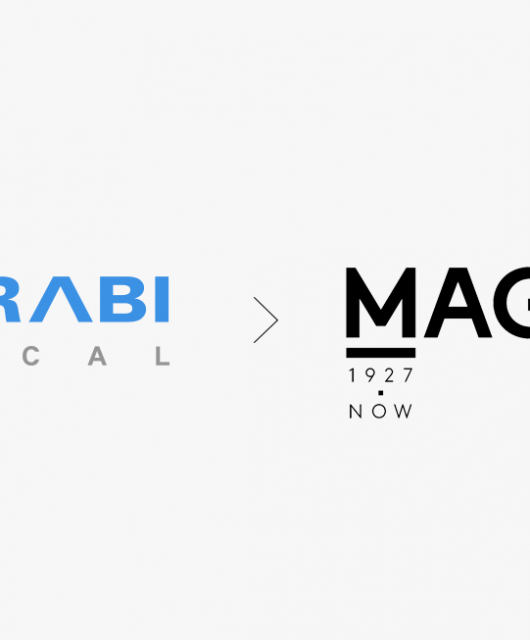Brand Essentials, David Keefe Offers Predictions for 2020 and Beyond
By David Keefe
Principal, Brand Essentials
Prediction 1: The Age of Millennial Fatigue
For the past two decades, brand marketers have spent billions of dollars (perhaps trillions) targeting established market segments that are largely defined by stratified, generational groupings, which we have all come to know very well. Here, we are referring to:
• Baby Boomers: Any one born between 1944 and 1964, and are between 55-75 years old (76 million in U.S.)
• Gen X: Any one born between 1965-1979 and are currently between 40-54 years old (82 million people in U.S.)
• GenY: Known as millennials, they were born between 1980 and 1994. They are currently between 25-39 years old. (73 million people in U.S.)
• GenZ: The newest generation, who were born between 1995 and 2015. They are currently between 4-24 years old ( nearly 74 million people in U.S.)
Understanding how these groups relate by age, and their relative size, is a very key factor in how brand marketers analyze and even predict brand preferences and behaviors. Clearly, marketers need to have a fundamental understanding of how each segment relates to demand for their products and brands – there is no argument there.
However, with behavioral analytics and algorithms now becoming a key part of the analytical arsenal, marketers are now able to target well beyond these seemingly monolithic cohorts, to reach more finely defined segments, or even entirely new segments. What we are learning is that large, conventional and monolithic cohorts, for instance Millennials, do not always move in concert, and may not be the reliable indicator for things like purchase intent, word-of- mouth, repeat purchase or other areas of import, as we once thought.
To this end, emerging differences in psychographics, socioeconomics and regional cultures can be so vast between Millennials, for example, in Paramus, New Jersey versus those in Birmingham, Alabama, that their comparison can become irrelevant, if not unwieldy. Indeed, when assessing brand preference, we are seeing that where one lives (e.g. a region, a community, a neighborhood) can be a far better indicator for targeting purposes, than the age of an individual.
Understanding the above context, 2020 will be the year where marketers, long-trapped within conventional segmenting regimes, break free from a one-size fits all targeting apparatus, to drill deeper into the hearts and minds of would-be brand loyalists, which they may discover in some very unpredictable places. Thus, by overcoming decades-old “Millennial Fatigue” marketers will be able to rethink their traditional targeting criteria and transform the accuracy of their brand’s periscope going forward. We love you Millennials – but it’s time to move on.
Prediction 2: Time-Tested Branding?
As we embark on a brand-new decade, there are so many things that will impact how brands are portrayed and marketed for success. Indeed, differentiation is all about capturing those things that are unique, strategic advantages that a brand has earned over time, relative to the competition. As marketers dig deep for those kernels that are both true and important, some will unfortunately be tempted to anchor their brands around themes, that while “timely”, will quickly become tired, trite and overused by unimaginative branding programs during the year ahead.
2020 Focus: Drum roll please. The first of these predicable platitudes will be oriented around “2020” – an obvious mechanism to imply focus, precision and exactness. Knowing that 2020 is a term and metaphor for high clarity vision, it is only a matter of time before way too many brands anchor to this idea in their messaging, taglines and promotions during this year. Yes, unfortunately, a tsunami of 2020-themed promotions, claiming “2020 focus” are headed our way, which will be an indicator that a brand has either nothing original to say, or have just given up.
The Decade Ahead: Another likely, and completely predicable, brand
message will center around “The Decade Ahead”. Like with 2020 Focus, “Decade Ahead” messaging will try to harness an aspirational and distant view into the future, which (sorry to say) won’t be unique or meaningful. To be sure, employing messaging that can be claimed by any brand (e.g. Designed for the Decade Ahead) underwhelms due to its emptiness. Conversely, brand messaging needs to always be original -but there is more. For a message to be effective it must be both true and important – the latter, finely tailored to something that is “ownable” and vital to a brand’s core audiences. Without that combination, messaging is just ad copy, drifting rudderless into the decade ahead.
Prediction 3: The Rise of the Apolitical Brand
The Bernoulli Principle (see Daniel Bernoulli, Swiss physicist circa 1700s) teaches us that if the speed of air moving over the top of the airplane’s wing is greater than the air speed underneath the wing, it reduces the downward pressure on the wing and thus creates lift – it is the reason why planes can fly. The ‘Bernoulli Effect’ acts as an immutable law of physics; a predictable, constant, that one can take to the bank.
In branding, there are also immutable laws that marketers should heed to if they are to resonate with a diversity of target audiences, namely; the need for brands to avoid overt political associations whenever possible.
Why is this important? Looking back at the renaissance of strategic marketing, ushered in by luminary Phillip Kotler of Northwestern’s Kellogg Business School, he cautioned that the business of building brands must be solely focused on meeting unmet needs, and that politics should not be part of that exercise. Like Bernoulli, Kotler’s constructs became constants that have guided generations of marketers. To Kotler, mingling branding with politics could offer serious pitfalls, where brands can become mired in associations, and issues, often way outside of a marketer’s control. In Kotler’s world there are 4Ps: product, price, placement and promotion – read: things that marketers can generally control. If mixing politics with branding was a sound strategic premise, then the 5th P (Politics) would have been included in Kotler’s idea of the “Product Mix” – but it was not, and for good reason.
To this point, very recently Golden Globes host and comedian Ricky Gervais, held court with the Hollywood community, where he admonished the whole industry at this live venue, for its tendency to share their politics, unsolicited. His point was clear and simple – people want to be entertained, so please do that, and nothing more. The delivery of his message.
To be clear, brands should, and need to align themselves with groups and activities that produce a societal good, which can be a great magnet for any brand. A great example,4Ocean is an organization that cleans millions of tons of trash from beaches and reefs each year, who are mobilized around the world to save our oceans (https://4ocean.com). Joining forces with this kind of apolitical entity with a high-value mission, can clearly attribute great associations back to any brand, with virtually no downside risk to the brand. Makes sense.
Thus, as we scan out over 2020 (an election year), look for more and more brands to actually avoid politics and de-politicize, by heeding Kotler’s advice. Maybe, by curating brand associations around “greater good” activities and organizations that offer real and tangible benefits, more brands in 2020 will achieve the essential lift and trajectory that Daniel Bernoulli once theorized back in the 1700s.





